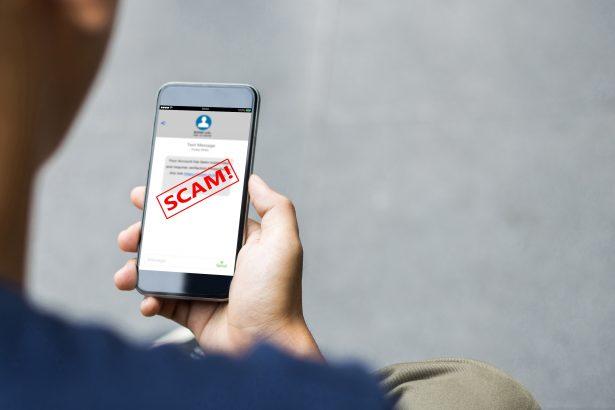In our digital age, the proliferation of cyber threats continues to pose significant risks to individuals and organizations alike. One such threat is the WebmailConfirmDomainOwnership malware, a pernicious piece of software that compromises webmail accounts and potentially causes substantial damage. This article delves into the nature of the WebmailConfirmDomainOwnership threat, its actions, and its consequences, while providing a comprehensive guide to its removal and tips for preventing future infections.
Understanding WebmailConfirmDomainOwnership Malware
Actions of the Malware
WebmailConfirmDomainOwnership malware typically infiltrates systems through phishing emails, malicious websites, or deceptive pop-up ads. Once inside, it performs the following actions:
- Credential Theft: The malware is designed to steal login credentials from webmail accounts, including usernames and passwords. It may also target other sensitive information stored in the browser.
- Account Takeover: By gaining access to webmail accounts, the malware can hijack them, enabling cybercriminals to send phishing emails or spam from the compromised account.
- Data Exfiltration: The malware may exfiltrate sensitive data from the victim’s system, including emails, contact lists, and any other valuable information.
- Persistence Mechanisms: It often installs backdoors or other persistence mechanisms to maintain access to the infected system even after apparent removal.
Consequences of Infection
The consequences of a WebmailConfirmDomainOwnership malware infection can be severe and far-reaching:
- Identity Theft: Stolen credentials can lead to identity theft, with criminals using the victim’s identity for fraudulent activities.
- Financial Loss: Cybercriminals can use compromised accounts to gain access to financial information, leading to potential financial losses.
- Reputation Damage: If the malware uses a victim’s email account to send phishing or spam emails, it can damage the victim’s reputation.
- Data Breach: Sensitive data exfiltrated by the malware can result in data breaches, affecting both individuals and organizations.
Detection Names
Different cybersecurity firms may identify the WebmailConfirmDomainOwnership malware under various names. Some common detection names include:
- Trojan:Win32/WebmailConfirm.A
- Backdoor:MSIL/WebmailConfirm
- PWS:HTML/WebmailConfirm
- Mal/HTMLGen-A
Similar Threats
WebmailConfirmDomainOwnership is not unique in its methodology. Similar threats include:
- Emotet: A notorious banking Trojan that also functions as a dropper for other malware.
- TrickBot: A modular banking Trojan that evolves continually, often used in conjunction with ransomware.
- FormBook: An information stealer that captures credentials and other sensitive information from infected systems.
Comprehensive Removal Guide
Step 1: Disconnect from the Internet
To prevent further data exfiltration and reduce the risk of the malware spreading, immediately disconnect the infected device from the internet.
Step 2: Boot in Safe Mode
Restart your computer in Safe Mode to limit the malware’s ability to interfere with the removal process. On Windows, you can do this by:
- Restarting the computer.
- Pressing the F8 key before the Windows logo appears.
- Selecting “Safe Mode with Networking” from the menu.
Step 3: Identify and Terminate Malicious Processes
Open the Task Manager (Ctrl+Shift+Esc) and look for suspicious processes. Terminate any processes that are not recognizable or are consuming excessive resources.
Step 4: Delete Temporary Files
Clearing temporary files can remove some malware components and speed up the scanning process. Use the Disk Cleanup tool (search for “Disk Cleanup” in the Start menu) to remove temporary files.
Step 5: Remove Malicious Programs
Go to Control Panel > Programs and Features (or Add/Remove Programs) and uninstall any unfamiliar or suspicious programs.
Step 6: Clean Browser Settings
Check and clean your browser settings:
- Remove Malicious Extensions: In your browser settings, navigate to the extensions/add-ons page and remove any extensions you did not install or recognize.
- Reset Browser Settings: Reset your browser to its default settings to remove any changes made by the malware.
Step 7: Scan with Built-in Tools
Use Windows Defender or any other built-in security tool to perform a full system scan and remove any detected threats.
Step 8: Manually Check for Residual Files
Navigate to common directories where malware might reside, such as:
- %TEMP%
- %APPDATA%
- %LOCALAPPDATA%
Delete any suspicious files or folders.
Step 9: Update Your System
Ensure your operating system and all software are up to date to close any security vulnerabilities.
Step 10: Change Passwords
Once the system is clean, change passwords for all potentially compromised accounts, starting with webmail and financial accounts. Use strong, unique passwords for each account.
Best Practices for Preventing Future Infections
- Be Cautious with Emails: Do not open attachments or click on links in unsolicited emails.
- Use Strong, Unique Passwords: Employ a password manager to keep track of strong, unique passwords for each account.
- Enable Two-Factor Authentication (2FA): Enhance security by enabling 2FA on all accounts that support it.
- Keep Software Updated: Regularly update your operating system and software to patch security vulnerabilities.
- Use Firewalls: Enable and configure firewalls to block unauthorized access to your network.
- Educate Yourself and Others: Stay informed about the latest cyber threats and educate others in your organization or household.
Conclusion
WebmailConfirmDomainOwnership malware is a significant threat that can lead to severe consequences if not addressed promptly. By following the comprehensive removal guide and adhering to best practices, individuals and organizations can protect themselves from this and similar cyber threats.




